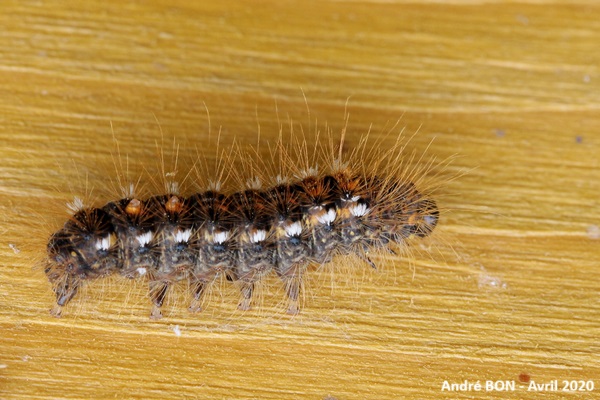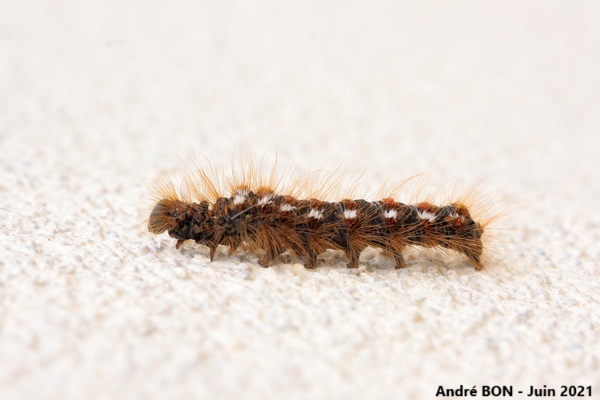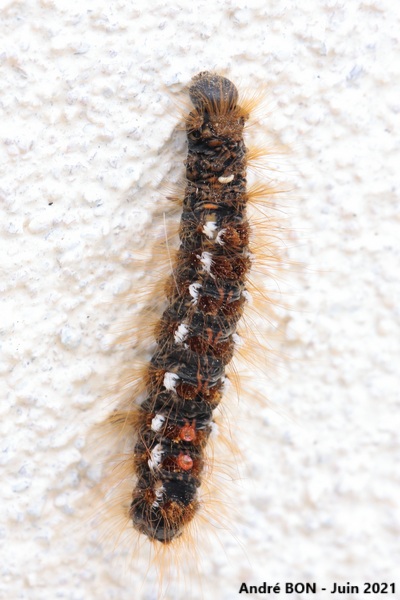



| Brown-tail Moth (Euproctis chrysorrhoea (Linnaeus, 1758)) |




|
|
Scientific name: Euproctis chrysorrhoea (Linnaeus, 1758) Common name: Brown-tail Moth French name: Bombyx cul-brun, Cul brun. Order: Lepidoptera Suborder: Heterocera Family: Erebidae Subfamily: Lymantriinae Wingspan: 36 to 42 mm. Biotope: Forests, woodland edges, parks and gardens. Geographic area: Europe Southern and temperate Europe east to western Asia, Turkey, Israel, Syria. North Africa. Introduced to North America. Flight time: June to August. Number of generations : 1 Caterpillar: Brown with two rows of dorsal warts bearing long reddish bristles and two orange dorsal outgrowths on segments 6 and 7. The sides bear white bristles as well as a row of 8 white spots. The caterpillars are gregarious during their early stages of development. They overwinter in a communal nest and resume their growth in spring. They can cause significant damage to vegetation and their bristles are also stinging. The caterpillar of the Yellow-tail Moth (Euproctis similis) is darker and bears black and white dorsal bristles. Host plant: Many deciduous trees and shrubs, Oaks (Quercus sp.), Birches (Betula sp.), Elms (Ulmus sp.), Hawthorns (Crataegus sp.), Willows (Salix sp.), etc. |
The abdomen of the Brown-tail Moth is white with a tuft of brown hairs at the tip, much larger on females than on males. The look is hairy, the wings are bright white. The male may have black spots on the posterior edges of the forewings. The antennae of males are very strongly feathery, those of females are much less so. The Brown-tail Moth is attracted to light. There is a possible confusion with the Yellow-tail Moth (Euproctis similis). This latter species has a more yellow tip to the abdomen and a more rounded apex to the forewings. |
| [To know more about the Brown-tail Moth] [Next picture] [Top] |

|
The distinctly brown dorsal bristles and the two orange dorsal tubercles on segments 6 and 7 allow the identification of the Brown-tail Moth caterpillar. |
| [To know more about the Brown-tail Moth] [Next picture] [Previous picture] [Top] |

|
Lateral view. |
| [To know more about the Brown-tail Moth] [Next picture] [Previous picture] [Top] |

|
Here is another sighting of the Brown-tail Moth caterpillar. I might need to organize a night light trap session to observe the imago. |
| [To know more about the Brown-tail Moth] [Previous picture] [Top] |

|
Top view. |